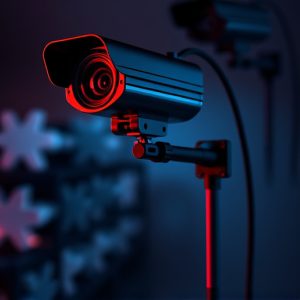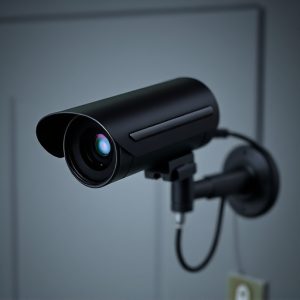Spy Cameras and Microphones: The Miniaturization and Mastery of Covert Surveillance Devices
Spy cameras and microphones have advanced significantly, offering high-quality, discreet audio and …….
Spy cameras and microphones have advanced significantly, offering high-quality, discreet audio and video surveillance capabilities. These devices are designed for seamless integration into everyday environments with features like motion-activated recording, remote access, and substantial storage for continuous monitoring. They employ noise cancellation and sophisticated algorithms to ensure clear audio recordings, and come equipped with infrared and directional microphones for optimal performance in various conditions. Their small size and clever disguises make them ideal for security professionals and those prioritizing privacy, aiding in maintaining confidentiality and ensuring the integrity of surveillance operations. The technology also includes cutting-edge encryption methods and night vision for secure and covert monitoring. Legal and ethical considerations are paramount, with surveillance activities strictly regulated to protect individual privacy rights and prevent misuse of such powerful tools. The article underscores the importance of balancing security needs with respect for personal boundaries and privacy, advocating for clear policies and comprehensive regulations to govern their use responsibly. Keywords: spy camera and microphone technology advancement, legal and ethical considerations in surveillance.
Exploring the clandestine capabilities of audio spy devices, this article delves into their stealthy mechanisms, from spy cameras and microphones to the innovative strategies in their concealment. Witness the remarkable evolution of miniaturization that has transformed these tools into minuscule yet formidable titans in the realm of surveillance. We’ll dissect the art of disguise, the mastery of intelligence analysis, and the complex legal and ethical landscapes surrounding their use. Join us as we uncover the inner workings and broader implications of these pervasive spy camera and microphone technologies.
Unveiling the Stealthy Mechanisms of Spy Camera and Microphones: A Comprehensive Overview
Audio spy devices encompass a range of covert technology designed for discreet audio surveillance. These devices are engineered with precision to capture clear, high-quality sound while maintaining an inconspicuous presence. Spy cameras, often integrated with microphones, are crafted to blend seamlessly into their surroundings, whether perched on a bookshelf or disguised within everyday objects like clocks or smoke detectors. The miniaturization of these components allows for unobtrusive monitoring that can go undetected in environments ranging from residential spaces to sensitive corporate areas.
The mechanisms underlying spy cameras and microphones are sophisticated, employing advanced algorithms and noise-cancellation features to ensure the capture of pristine audio without interference. These devices often feature motion-activated recording capabilities, remote accessibility via secure internet connections, and high-capacity storage for extensive monitoring sessions. Additionally, they may include features like infrared capabilities for night vision or directional microphones to pinpoint sound sources. The combination of these technologies in spy cameras and microphones makes them invaluable tools for security personnel, investigators, and those requiring confidentiality and discretion in their audio surveillance endeavors.
The Evolution of Miniaturization: How Spy Cameras and Microdevices Became Tiny Titans in Surveillance
Mastering the Art of Concealment: Creative Placement and Disguise Techniques for Spy Devices
In the realm of espionage, the ability to record or monitor communications undetected is paramount. Mastering the art of concealment for spy cameras and microphones is a critical skill for agents and security professionals alike. These devices must be integrated into their surroundings with such finesse that they remain invisible to the untrained eye. Creative placement often involves using everyday objects as covers for these gadgets. A spy camera might be ingeniously hidden within an ornament, a smoke detector, or even a seemingly ordinary book in a bookshelf, ensuring it captures footage without raising suspicion. Similarly, microphones can be cleverly concealed within a variety of items, such as wall clocks, picture frames, or even a piece of wooden molding, allowing for clear audio capture while maintaining an unassuming presence. The key to successful concealment lies in the design and the understanding of human behavior and perception; these devices are crafted to blend into environments where they can record or transmit data without detection. Advanced models come with remote-control capabilities, enabling operatives to activate them without physical contact, further enhancing their stealth operations. As technology advances, so too do the methods of concealment for spy cameras and microphones, making them increasingly effective tools in the clandestine world of surveillance.
The techniques for disguising these devices are not limited to physical concealment; they also encompass sophisticated signal-routing strategies that ensure communication is encrypted and secure. Sophisticated spy cameras may be equipped with infrared or night vision capabilities, allowing them to operate under low-light conditions without giving away their presence. Microphones, too, are designed with sensitive, high-fidelity components that can pick up sounds from a distance while remaining undetected. The integration of these devices into everyday objects not only serves the purpose of concealment but also adds layers of complexity to the task of tracing their location should the need arise. This added layer of security is essential for maintaining the integrity of sensitive operations and safeguarding the data captured by these devices. As such, the ongoing innovation in the field of spy technology continues to push the boundaries of what is possible in the art of concealment.
Deciphering Audio and Visual Data: The Analysis and Interpretation of Intelligence Gathered by Spy Cameras and Microphones
Audio spy devices are pivotal in deciphering covert communications, providing raw audio data that requires meticulous analysis to extract meaningful intelligence. The process begins with the capture of sound waves by miniature microphones embedded within these devices. These microphones are designed to be inconspicuous while maintaining high-fidelity recording capabilities, ensuring that even the faintest whispers or subtle nuances can be discerned. The recorded audio is then scrutinized using sophisticated software that enhances sound clarity and filters out background noise, a common challenge in intelligence gathering. This refined data is crucial for subsequent analysis, allowing analysts to identify key phrases, patterns of speech, and potential coded messages within the audio.
In parallel with audio data, spy cameras serve as the visual counterpart, capturing high-definition video footage that complements the auditory information. Analysts leverage advanced algorithms to synchronize both streams of data, creating a comprehensive narrative from the juxtaposition of sight and sound. This integration is essential for contextual understanding, as it enables the identification of individuals, locations, and actions that might be otherwise missed or misinterpreted. The harmonization of audio and visual intelligence allows for a more accurate and complete interpretation of events, which is indispensable for security and law enforcement operations in safeguarding national interests or conducting criminal investigations.
Legal Implications and Ethical Considerations in the Use of Spy Camera and Microphone Technology
The deployment of spy camera and microphone technology raises significant legal implications and ethical considerations that are crucial for society to navigate. Legally, the use of such devices is often governed by privacy laws, which vary by jurisdiction but generally protect individuals’ right to privacy. These laws dictate where and how surveillance devices can be placed, who can monitor the footage or audio recorded, and what must be disclosed to individuals being filmed or recorded. Unauthorized recording or interception of private communications can lead to legal consequences, including fines and imprisonment, underscoring the importance of adhering to legal frameworks when employing spy camera and microphone technology.
Ethically, the use of these devices touches upon the respect for individuals’ personal boundaries and the right to privacy. It prompts a question about where society draws the line between legitimate security concerns and the invasion of personal space. The ethical use of such technology must be balanced with respect for individual autonomy; it should not be used covertly in areas where people have a reasonable expectation of privacy, nor should it be used to harass or spy on individuals without their consent. Transparent policies and strict regulations are necessary to safeguard the rights of individuals while allowing for legitimate uses of spy camera and microphone technology in scenarios such as law enforcement, security monitoring, and personal safety.


